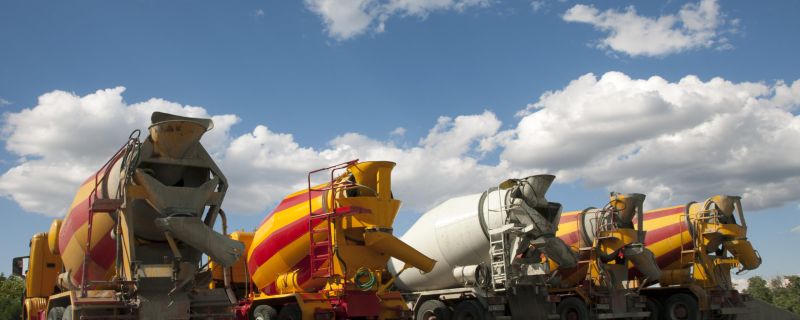
- Claims & Risk Management
- 1 comment
Delivering concrete comes with a variety of additional safety concerns not faced by the average delivery driver. From filling to unloading, there are a number of operational concerns you need to keep in mind in order to ensure continued safety.
Cement Dust
Exposure to cement dust can cause irritation to your eyes, skin and upper respiratory system. Over a long period of time, repeated exposure can lead to chronic lung conditions, including lung cancer. Take precautions, including:
- Rinse eyes with water if they come into contact with cement dust and consult a physician.
- Use soap and water to wash off dust to avoid skin damage.
- Wear a P-, N- or R-95 respirator to minimize inhalation of cement dust.
- Eat and drink only in dust-free areas to avoid ingesting cement dust.
Wet Concrete
Like cement dust, mixed concrete can also act as an irritant. When working with wet concrete:
- Avoid direct contact.
- Wear protective gloves, changing them if they become wet.
- Wear eye protection when there is a chance for concrete to splash.
- Like cement dust, wash areas that come into contract with wet concrete as soon as possible.
During Delivery
When making a delivery at a customer location, remember:
- Establish in advance the area of entrance, route through the site and the final placement of the truck for unloading.
- Make sure the area that you will travel over is stable and can support the weight of the vehicle.
- Check for any possible obstruction such as trees, overhead structures or power lines.
- Designate a traffic controller if necessary.
- Do not use additional chutes beyond those supplied on the truck.
- Use a spotter when moving the truck with an extended chute. Make sure the chutes are locked in place before moving.
- Only employees are allowed on or in the vehicle.
Concrete Pump Use
When operating a vehicle with a concrete pump, review the following before any work is started:
- Are the pump specifications adequate to handle the size of the load?
- Have all hoses and connectors been inspected by a qualified inspector?
- Are controls clearly marked, along with a designated emergency shutoff switch?
- Has a communication method (two-way radios, hand signals) been established between you, the vehicle operator and your spotters?
- Are all those working around the pump outfitted with the correct PPE?
Looking for more safety tips? Contact The Safegard Group for more information like this!


1 Comments
My uncle has been thinking about getting some concrete for his shed in the back so that it can be more stable. Getting a professional to help him pump it can ensure that he has the right equipment for it. I liked what you said about how a spotter should check that the chute is in place before moving it.